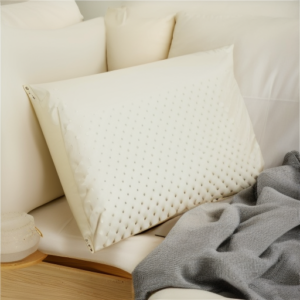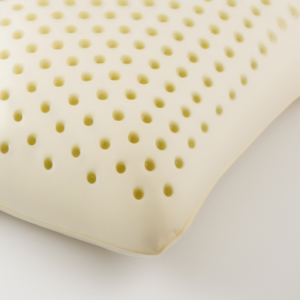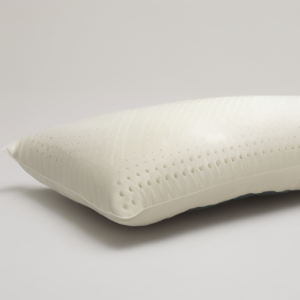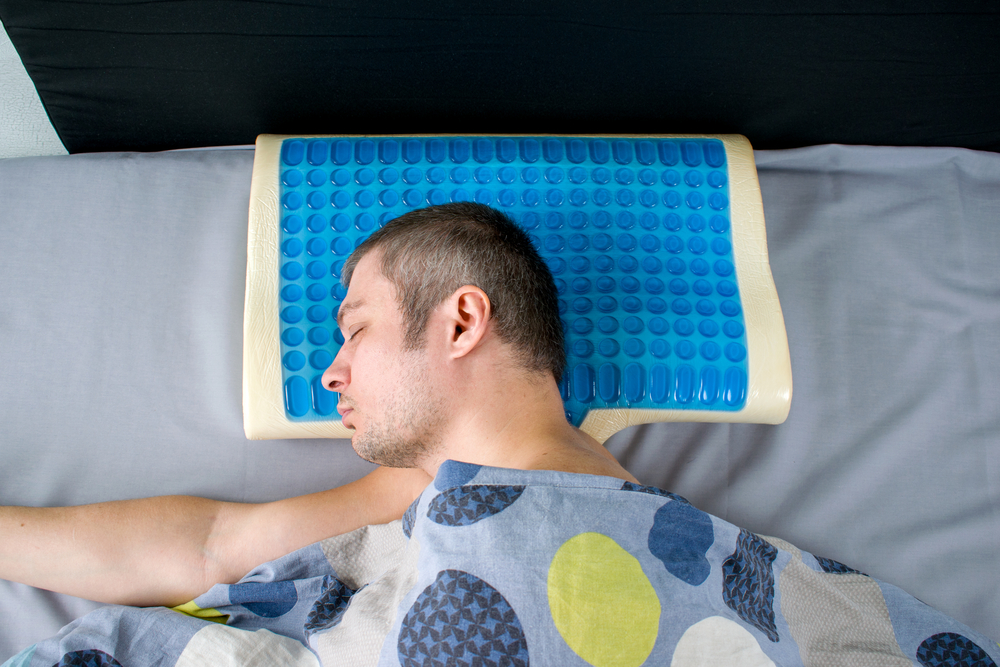Last Updated on February 14, 2023
Are you tired of waking up drenched in sweat after a night’s sleep? You may be wondering if latex pillows make you sweat. It can certainly feel like they do. But the truth is that there are many factors to consider when it comes to finding out whether or not your pillow is causing you to perspire. In this blog post, we’ll take an in-depth look at how latex pillows affect your sleep temperature and answer the question: Do latex pillows make you sweat? We’ll also provide tips for keeping cool with a latex pillow as well as alternatives for those who prefer something different. So read on and get ready to find out everything about what makes (or doesn’t make) these popular sleeping aids so hot – literally.
Table of Contents:
- How Do Latex Pillows Affect Your Sleep Temperature?
- Are Latex Pillows Hotter Than Other Types of Pillow?
- Tips for Keeping Cool with a Latex Pillow
- Conclusion
How Do Latex Pillows Affect Your Sleep Temperature?
When it comes to getting a good night’s sleep, the temperature is one of the most important factors. Latex pillows are becoming increasingly popular due to their comfort and durability, but how do they affect your body temperature while you sleep?
Latex pillows are made from natural rubber tree sap, which makes them naturally breathable and hypoallergenic. This means that latex pillows can help keep your head cool during the night by allowing air to circulate around your head and neck. However, there are some other factors that can influence how hot or cold a latex pillow feels on your skin.
The thickness of the pillow will have an effect on its ability to regulate temperature. Thicker pillows may be more comfortable for side-sleepers as they provide extra support for the neck and shoulders; however, this additional padding can also make them feel hotter than thinner models. Additionally, if you tend to move around in bed during the night, then thicker pillows may cause you to overheat as they retain heat more easily than thinner ones.

The type of cover material used on a latex pillow can also have an effect on its ability to regulate body temperature; natural fabrics such as cotton or bamboo are better at wicking away moisture than synthetic materials like polyester or rayon and thus may help keep you cool for longer. Furthermore, the firmness level of your pillow will influence how hot it feels – softer versions tend to trap heat, whereas firmer varieties allow air circulation more effectively so that they don’t become too warm when used over extended periods.
Finally, if you live in an area with high humidity levels, then this could also contribute to making your latex pillow feel warmer than usual, as humid air does not dissipate heat effectively compared to dry air conditions where it evaporates rapidly from bedding materials such as mattresses and pillows.
Overall, there are several different factors that come into play when determining whether or not a particular type of mattress or pillow will be suitable for keeping you cool throughout the night – from thickness levels to cover material choices. All these elements need careful consideration before investing in any new sleeping product.
Ultimately, understanding how latex pillows affect your sleep temperature is key to ensuring a comfortable night’s rest. While some may find them too hot, others may find them the perfect temperature. Let’s now explore whether latex pillows are hotter than other types of pillows and what can be done if they are too warm.
Are Latex Pillows Hotter Than Other Types of Pillow?
When it comes to choosing the right pillow for a good night’s sleep, there are many factors to consider. One of the most important is temperature control. Latex pillows have become increasingly popular in recent years due to their ability to keep you cool while sleeping. But how do they compare with other types of pillows when it comes to heat retention?
Latex pillows are made from natural rubber and are highly breathable, allowing air circulation throughout the pillow. This helps regulate your body temperature as you sleep by dissipating heat away from your head and neck area. Memory foam and down pillows, on the other hand, tend to retain more heat because they don’t allow air flow as easily as latex does. As a result, these types of pillows can make you feel hot or stuffy during the night.

Latex pillows offer superior support when compared to memory foam, as they do not sink into themselves under pressure like memory foam does. This helps provide consistent comfort throughout the night without having to adjust or fluff up your pillow constantly, unlike down or polyester fillings which flatten out quickly with weight and movement during sleep.
Latex has an open-cell structure that allows air to flow through its core, making it cooler than traditional synthetic foams like polyurethane used in many mattresses today. This makes them ideal for those who tend to get too hot at night, even with lightweight bedding options such as cotton sheets. Furthermore, since latex naturally resists dust mites and mould growth, unlike some synthetic foams used in cheaper alternatives (such as polyester), this means fewer allergens circulating around your bedroom environment, providing a hypoallergenic option for allergy sufferers.
Ultimately, it is up to the individual user to decide if a latex pillow is too hot for them. However, with some simple tips and tricks, you can make sure that your latex pillow remains comfortable and cool even in warm weather – so let’s take a look at what those are in the next section.
Tips for Keeping Cool with a Latex Pillow
Latex pillows are a popular choice for those looking to get a good night’s sleep. They provide support and comfort, but some people find that they can be too hot. If you’re one of these people, there are several ways to make sure you stay cool while using your latex pillow.
The first step is to choose the right bedding. Breathable fabrics like cotton or linen will help keep air circulating around your body and reduce heat buildup in the pillow area. It’s also important to avoid synthetic materials such as polyester, which trap heat and moisture close to your skin, making it harder for your body temperature to regulate itself during sleep.
Another way to keep cool with a latex pillow is by keeping the room well-ventilated throughout the night. Open windows or use fans if necessary so that fresh air can circulate freely around the bedroom and replace any stale air trapped inside from earlier in the day when temperatures were higher outside than inside. This will help ensure that cooler nighttime temperatures don’t become trapped indoors where they could cause discomfort while sleeping on a latex pillow at night time hours.

Finally, consider investing in an adjustable mattress base or memory foam mattress pad to create more space between you and your mattress surface. This will allow for increased airflow underneath you while sleeping on top of it, thus reducing any heat build up caused by direct contact with a non-breathable material like memory foam or even traditional mattresses without proper ventilation holes built into them. Additionally, adding an extra layer of breathable fabric between yourself and the pillow may also help dissipate some of its warmth before reaching out directly onto your skin.
For those looking to stay cool while sleeping, a latex pillow may not be the best choice; however, there are plenty of other options available that can provide you with a comfortable night’s sleep. Let’s explore some alternatives to latex pillows in the next section.
Conclusion
In conclusion, it is important to understand how latex pillows affect your sleep temperature and whether or not they make you sweat. While latex pillows can be hotter than other types of pillow, there are some tips for keeping cool with a latex pillow that can help. If you’re still worried about the potential for sweating at night, then there are alternatives to consider such as memory foam or down-filled pillows. Ultimately, the decision on which type of pillow is best for you depends on your individual needs and preferences – but understanding if do latex pillows make you sweat is an important part of making an informed choice.
Paul is the type of person who never met a problem he couldn’t fix. He can always be found tinkering with something in his house, even if it isn’t broken! His tips and tricks are often shared on our site. He’s the one you call when something breaks because he has been known to improvise fixes for everything from leaky faucets to malfunctioning dryers.

